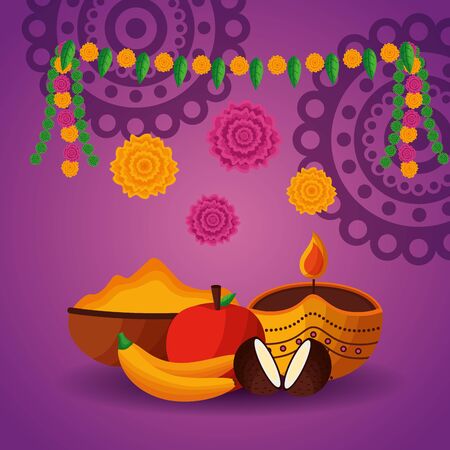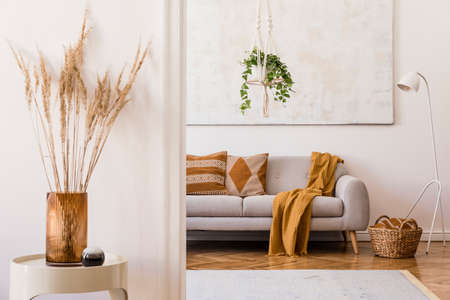Introduction to Eco-friendly Decor in Indian Homes
In recent years, Indian urban households have witnessed a remarkable shift towards sustainable and eco-friendly interior design. With growing awareness about environmental impact and the health benefits of natural materials, more families are choosing home decor that is both earth-friendly and rooted in India’s rich cultural heritage. This trend is especially visible among young professionals and modern families in metro cities like Kolkata, Bhubaneswar, Bengaluru, and Mumbai, who seek to balance contemporary lifestyles with traditional values. Eco-friendly Bengali and Odia design elements—ranging from handloom textiles to terracotta crafts—are being embraced not only for their minimal carbon footprint but also for their authentic aesthetic appeal and positive influence on wellness. As the demand for green living spaces rises, interior designers are integrating regional motifs, organic materials, and age-old artisanal techniques into modern Indian decor, creating homes that tell a story while nurturing both people and the planet.
The Beauty of Bengali and Odia Design Heritage
When it comes to eco-friendly Indian décor, few regional styles offer the rich blend of tradition and sustainability quite like Bengali and Odia design heritage. Rooted deeply in the culture and daily life of West Bengal and Odisha, these aesthetics are shaped by centuries-old artisanal wisdom, vibrant motifs, and natural materials. Understanding their unique artistic language is essential for anyone seeking to incorporate sustainable elements into modern Indian interiors.
Unique Motifs: Stories Woven in Thread and Paint
Bengali and Odia motifs draw inspiration from nature, mythology, and local folklore. Common symbols include fish (signifying prosperity), the lotus (purity), conch shells (auspiciousness), and peacocks (beauty). In Odia Pattachitra art, mythological narratives are painted with intricate precision, while Bengal’s Kantha embroidery features running stitches that create floral or geometric patterns on recycled textiles. These motifs not only beautify homes but also connect families to their cultural roots.
Colour Palettes: Earthy Tones with Vibrant Accents
The colour stories of these regions reflect their environment—think the lush greens of paddy fields, terracotta reds of rural houses, river blues, and the bright yellow of marigolds. Traditionally, natural dyes sourced from indigo, turmeric, madder root, and minerals are used to create colours that are both eco-friendly and gentle on the eye.
| Region | Signature Colours | Natural Dye Sources |
|---|---|---|
| Bengal | Indigo Blue, Red, White | Indigo Leaves, Madder Root |
| Odisha | Earthy Brown, Mustard Yellow, Green | Turmeric, Catechu, Leaf Extracts |
Artisanal Techniques: Sustainability Rooted in Tradition
Bengali artisans are renowned for weaving fine muslin and Baluchari sarees with handlooms—both processes that rely minimally on machinery and maximise use of renewable fibres like cotton and silk. In Odisha, the Ikat dyeing technique stands out for its resist-dye process on handwoven fabrics. Both regions also practice upcycling through Kantha work or applique art, where old fabrics are given new life as quilts or wall hangings.
Why These Techniques Matter for Sustainable Decor?
The emphasis on handcrafting ensures less energy consumption and supports local livelihoods. The use of natural materials means reduced carbon footprint compared to mass-produced décor items. Moreover, each handmade piece—whether a cushion cover or a wall hanging—carries forward an eco-conscious legacy interwoven with centuries-old stories.
Cultural Resonance Meets Contemporary Eco Trends
By embracing Bengali and Odia design elements in your home decor journey, you champion not only sustainability but also celebrate India’s diverse artistic narrative. This blend of traditional beauty and environmental responsibility creates spaces that feel personal, meaningful, and truly Indian at heart.

3. Sourcing Sustainable Materials Locally
One of the key aspects of creating eco-friendly Bengali and Odia decor lies in the mindful selection and sourcing of materials that are both sustainable and deeply rooted in local culture. Across Bengal and Odisha, the emphasis is increasingly on organic fabrics, recycled elements, and responsibly sourced materials that support both the environment and indigenous artisans.
Organic Fabrics: A Regional Pride
Bengal’s famed handloom cottons and silks, such as Jamdani, Tant, and Baluchari, offer not just visual elegance but also an eco-friendly alternative to mass-produced textiles. These fabrics are crafted using age-old techniques passed down through generations, requiring minimal chemical treatment and water usage. In Odisha, the intricate Ikat and Sambalpuri weaves stand out for their natural dyes and labor-intensive processes, making them highly sought-after by sustainability-conscious homeowners.
Recycled & Upcycled Decor Elements
Repurposing discarded materials is a trend gaining traction across urban and rural settings alike. From reclaimed wooden furniture to upcycled metal artifacts found in Kolkata’s markets or Bhubaneswar’s artisan hubs, Bengali and Odia homes are embracing recycled accents that tell a story while reducing landfill waste.
Terracotta: Timeless & Earthy
No sustainable Indian decor discussion is complete without mentioning terracotta—a material synonymous with the heritage crafts of Bengal (such as Bishnupur terracotta tiles) and Odisha (notably in Bankura horse figurines). Terracotta is locally sourced, biodegradable, and energy-efficient to produce. Its rustic charm blends seamlessly into contemporary interiors while championing a low-carbon footprint lifestyle.
By consciously choosing these locally available materials—handloom fabrics, recycled products, and traditional terracotta—homeowners can celebrate regional artistry and play a vital role in India’s growing eco-conscious movement. This approach not only supports local economies but also brings authentic Indian character into sustainable home design.
4. Fusion of Tradition and Modern Eco-conscious Lifestyles
Millennial Indians are redefining home decor by harmoniously fusing traditional Bengali and Odia artistry with the practicalities of modern, eco-friendly living. This new wave of design is not just about aesthetics—its a conscious choice reflecting both cultural roots and a commitment to sustainability. While the age-old crafts like kantha embroidery, patachitra painting, and sholapith sculpting carry forward a rich heritage, millennials are integrating these elements with contemporary concepts such as minimalism, smart storage, and upcycled materials.
How Millennials Blend Old & New
Today’s urban Indian homeowners are seeking clutter-free spaces that don’t compromise on cultural identity. Instead of filling homes with ornate artifacts, they opt for select statement pieces—like handwoven dhokra figurines or terracotta lamps—set against neutral backdrops. Eco-friendly paints and natural fibres further enhance the sustainable quotient. The following table illustrates how traditional Bengali & Odia design elements merge seamlessly with modern preferences:
Traditional Element |
Modern Application |
Sustainability Benefit |
|---|---|---|
| Kantha Embroidery | Accent cushion covers, wall art | Upcycling old fabrics, low environmental impact |
| Dhokra Metalwork | Minimalist centrepieces, drawer handles | Handcrafted, supports rural artisanship |
| Pattachitra Painting | Wall panels, smart storage facades | Natural dyes, promotes slow craft |
| Terracotta Pottery | Planters for indoor gardens, modular décor items | Biodegradable, locally sourced material |
| Sholapith Sculptures | Lightweight shelf displays, eco-wall hangings | Renewable resource, artisanal production |
The Role of Minimalism & Smart Solutions in Sustainable Living
Minimalism is more than just a trend in urban India—it’s a mindful response to limited space and the desire for easy maintenance. Millennials prefer multi-functional furniture made from reclaimed wood or bamboo that complements traditional accents while maximising utility. Smart storage solutions—such as under-bed compartments adorned with hand-painted motifs or modular shelves featuring cane work—help keep homes organised without sacrificing style or sustainability.
Cultural Relevance Meets Contemporary Needs
This thoughtful blending allows millennial Indians to celebrate their heritage in ways that suit fast-paced lifestyles and shrinking urban spaces. By choosing eco-friendly materials and supporting indigenous craftspeople, they’re not only preserving culture but also promoting an earth-friendly way of life that speaks directly to the values of today’s India.
5. Culturally Rooted, Eco-positive Brands & Artisans
India’s journey towards sustainable decor is incomplete without the passionate involvement of local brands, NGOs, and artisans who are deeply connected to Bengali and Odia heritage. These homegrown initiatives are not just preserving age-old traditions but also infusing them with eco-consciousness to meet modern demands for sustainability. Many small-scale enterprises from Kolkata to Bhubaneswar are reimagining indigenous crafts like Kantha embroidery, Pattachitra painting, Sabai grass weaving, and Dhokra metalwork by incorporating recycled materials, natural dyes, and ethical sourcing practices.
Spotlight on Local Changemakers
Brands such as Sasha (Kolkata) and Sambalpuri Bastralaya (Odisha) have become torchbearers for eco-friendly decor by collaborating directly with rural artisan clusters. Their collections often feature upcycled textiles, bamboo furniture, or handloom fabrics dyed with plant-based colours—each piece telling a story of cultural pride and environmental responsibility. NGOs like Rangasutra and Gramshree empower women artisans in Bengal and Odisha through fair wages and skill development while ensuring that sustainable design remains at the core of their product lines.
Celebrating Community-driven Sustainability
The rise of such eco-positive ventures has also led to increased community participation in conservation efforts. For instance, artists from Raghurajpur village—famed for its Pattachitra art—are now using organic pigments derived from local flora and experimenting with reusable canvas instead of traditional palm leaves. Likewise, Sabai grass artisans in Mayurbhanj district are reviving this ancient craft with contemporary aesthetics, offering everything from planters to wall hangings that appeal to urban Indian tastes while remaining rooted in Odisha’s green legacy.
Paving the Way Forward
By choosing products from these culturally grounded brands and artisans, Indian homeowners are not only investing in unique decor but also supporting livelihoods and ecological well-being. The synergy between tradition and innovation ensures that Bengali and Odia design elements continue to thrive sustainably—making every home a testament to India’s rich heritage and future-forward green vision.
6. Practical Tips: Bringing Home Bengali and Odia Sustainability
Smart Selection of Eco-friendly Décor Accents
When integrating sustainable Bengali and Odia elements into your home, begin by choosing décor accents made from natural materials like terracotta, bamboo, jute, and handloom textiles. Opt for products crafted by local artisans from West Bengal and Odisha, ensuring authenticity and supporting regional craftsmanship. Look for labels such as “handmade,” “organic,” or “ethically sourced” on items like patachitra wall art, kantha-stitched cushions, or dokra metalware. These not only add a touch of cultural pride but also ensure a lower environmental footprint.
Maintenance Matters: Caring for Natural Materials
Sustainable décor thrives with proper care. Regularly dust terracotta and bamboo artifacts to prevent buildup and use mild cleansers free from harsh chemicals. Air out handloom fabrics like Baluchari silk or Sambalpuri cotton periodically to maintain their freshness and vibrancy. Remember, eco-friendly materials often benefit from traditional cleaning methods—sun-drying, gentle washing with reetha (soap nut), or using neem leaves to repel insects are time-tested Indian practices that keep your pieces looking pristine while being planet-conscious.
Infusing Greenery the Local Way
Enhance your interiors with indoor plants native to Bengal and Odisha such as money plant (pothos), areca palm, or tulsi (holy basil). Place them in upcycled clay pots or woven baskets for an earthy touch. Incorporating green corners not only purifies air but also reinforces the region’s deep-rooted connection with nature. For balconies or verandahs, consider vertical gardens using coconut coir planters—a nod to coastal Odisha’s abundant resources.
Energy-efficient Lighting with Traditional Flavour
Switch to LED bulbs housed in cane or bamboo lamp shades for a warm ambience reminiscent of Bengali baithak or Odia courtyards. Solar-powered lanterns styled after heritage designs offer both energy savings and authentic regional aesthetics.
Upcycling & Repurposing Regional Artifacts
Transform old sarees into vibrant cushion covers or table runners—this is a popular practice among Bengali households promoting minimal waste. Use broken terracotta diyas as quirky garden markers or repurpose brass utensils into planters. These small acts of upcycling create a unique style story rooted in tradition yet conscious of modern sustainability needs.
Building Community Connections
Finally, join hands with local artisan collectives and NGOs promoting sustainable crafts in West Bengal and Odisha. Participate in workshops on eco-friendly decor making, or source directly from handicraft fairs like Shantiniketan Mela or Raghurajpur Craft Village. By making informed choices and nurturing community ties, you champion both sustainability and cultural identity—creating homes that reflect the true spirit of Indian eco-consciousness.


